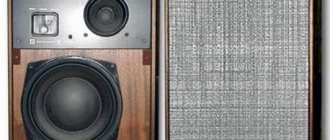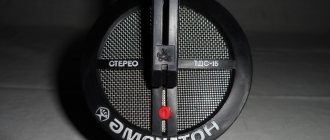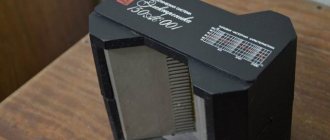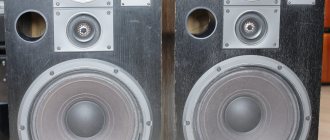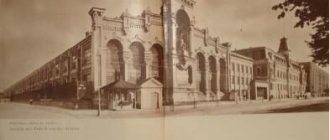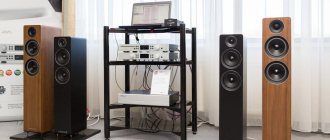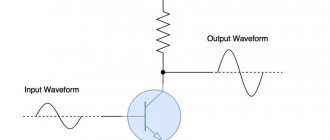Save and read later -
Riga, 1927. There is a massive craze for radio; in just one year the number of radio subscribers in Latvia increases from one and a half thousand to ten thousand people. At the same time, the owner of a photo studio, a native of a Jewish family, Abram Leibovitz, quickly realized that selling radio equipment was a very profitable business. But producing your own models is a very labor-intensive process, but selling foreign ready-made equipment is much more interesting.
But in Latvia there is a competition law that negates all the benefits of such activities. A born businessman, Leibowitz comes up with a solution: buy ready-made radios in Germany, disassemble them on the spot, package spare parts and bring them into the country under the guise of radio components. Already in Riga, the receivers were reassembled and sold under the guise of local ones under the ALRadio label. So JSC “Ābrama Leibovica foto radio centrāle” became the progenitor of the legendary.
Second dad
In the thirties, Leibowitz hired a brilliant technician who, at the age of 22, won a Ministry of Internal Affairs competition and assembled two hundred regenerative three-tube battery radios for border guards. Alexander Apsitis, who is often mistakenly considered the founder of the Riga plant, worked for Leibovitz for only a short time, since they did not agree on some work issues. Subsequently (in 1934), Apsitis decides to register his production: which produces Tonmeistars receivers and also produces radio accessories.
At the same time, Leibowitz has a new problem: Adolf Hitler comes to power in Germany, which aggravates the “Jewish question.” At the beginning of his reign, the country's enterprises were advised not to work with representatives of this nationality, so Leibovitz lost his main supplier of radio components, and he had to start developing his own models.
The strategies of Leibovitz's and Apsitis's enterprises were completely different: the first was a “merchant to the core”, he attracted customers due to the appearance of his goods and powerful advertising. The absolutely commercial component of Leibowitz's business made itself felt: if there was an opportunity to make a profit due to loss of quality, he did not miss it. This is still affecting us - now original radio receivers from his production are extremely difficult to find in working condition.
Apsitis, being an excellent radio engineer, was chasing quality. His different models sometimes differed little from each other in appearance, but were assembled perfectly. Ultimately, it was Apsitis who made the maximum contribution to the development of the enterprise, which would later become known as “Radiotehnika”.
Association of merchants and technicians
In 1940, Soviet troops entered Riga, and the new government nationalized Apsitis’s enterprise, merging it with several small private companies, and made the technician himself general director. Now the association was called “Radiotehnika”. In turn, Leibovitz’s company was also nationalized - it became part of the Radioopionieris enterprise. During the war, the Germans merged Radiopionieris and Radiotehnika, making them a branch of Telefunken Geratewerk Riga.
By the end of the war, in 1944, they tried to export all the enterprises to Germany, but, thanks to Alexander Apsitis, most of the equipment was still preserved (he quietly put bricks and scrap in boxes for transportation), and when the German occupation was lifted, the plant again received its former director and the name “Radiotehnika”.
The company intended to resume production of radio equipment, but it had to start with assistance in restoring the bridge across the Daugava, destroyed during the war. At the same time, traces of Abram Leibowitz are lost, the last mention of whom can be found only during the period of German occupation.
New production and legendary developments
In 1945, first the Riga T-689 receiver and then the Riga T-755 receiver hit the assembly line. The T-755 was designed with an emphasis on reducing production costs and is housed in a metal casing. Although there is an earlier version - in a wooden case, this can only be found among collectors.
In subsequent years, the demand for the plant's products increases sharply, and the need for expansion arises. New workshops are being built: assembly, galvanic, mechanical repair, etc. Already by 1950, “Radio Engineering” became an example of Stakhanov’s work, traditional for the Soviet Union.
A year later, the plant was named after the electrical engineer and inventor A.S. Popova. But bad times come for plant director Alexander Apsitis: first he is demoted due to “failure to fulfill the plan”, after which he is completely arrested. Four months later he is released from prison, but already broken, he never returns to the Apsitis plant.
But the radio giant continues to operate without its founders. In the early fifties, “Riga-6” and “Riga-10” receivers appeared. The sixth model weighed 12 kg, had six lamps, and consumed 55 W from the network. It was possible to play records on it from an external player. The tenth model (the number ten here also means the number of lamps) weighed 24 kg, consumed no more than 85 W from the network and (like Riga-6) received broadcasts in the HF, MW and LW bands. And to ensure good sound, this model used a wideband speaker.
According to Inars Klavins, who worked at Radiotekhnika for 33 years, the plant’s equipment was in demand not only in the USSR - it was bought in Germany, France, Britain and other Western countries. Consumers liked the simplicity and reliability of Riga radios.
Later, one of the first small-sized serial transistor radios, the Gauja, appeared in the Soviets; it was produced in two variations - with and without a battery charger (then it ran on a Krona battery). By the way, the popular “Gauya” can be seen in Soviet films: “Three Plus Two”, “Beware of the Car” and others.
In the early sixties, the plant produced automobile receivers "AVP-60" and "APV-60-2", which were mounted on "Chaikas" and one hundred and eleventh ZILs. The first model even had a remote control; the receivers had both a manual wave search and an automatic station tuning system.
Separately, we note the stereo radio radio “Simfonija 2” - this is a modernized version of the first “Symphony”. It had two versions: in one the player was located next to the receiver, in the other - under it, each speaker weighed 16 kg.
The portable Neptune, assembled on seventeen transistors and eight diodes, was developed for the 60th anniversary of the October Revolution.
By the way, VCRs were also developed at Radiotekhnika. For example, on Malachite they played a recording of the docking of the Soyuz - Apollo spacecraft.
How much did high-end equipment cost in the USSR (15 photos)
Author: Yugansk
17 September 2022 20:45
Community: USSR
Tags: Radios USSR interesting tape recorders player
9895
15
Let's say right away that the highest class is an expensive pleasure.
1.
0
See all photos in the gallery
Electrophone "Allegro 002 stereo". Produced since 1977. Retail price 660 rubles.
2.
0
Tuner "Laspi-001-stereo". Produced since 1976. Retail price 190 rubles
×
3.
0
Tuner with amplifier (2x50 W) “Corvette -004-stereo”. Produced since 1982. Retail price 650 rubles
4.
0
Radiola "Estonia 008 stereo". Retail price 550 rubles
5.
0
Tape recorder - prefix "Mayak-001-stereo". Produced since 1973. Price 980 rubles.
6.
0
Tape recorder-attachment "Electronics TA1-003". Produced since 1979 Retail price 1375 rubles
7.
0
The Vilma-001-stereo cassette recorder-attachment has been produced since 1982. Retail price 1350 rubles
8.
0
Cassette recorder-attachment "Mayak-011-stereo". Produced since 1983. Retail price 1900 rubles.
9.
0
Perhaps the first high-class music center in the USSR was the Victoria -001-stereo radio combine, production of which began in 1972. Retail price 590 rubles.
10.
0
Musical. Produced since 1980. Retail price 1980 rubles.
11.
0
Radio combine "Phoenix-005-stereo". Produced since 1980. Retail price 3400 rub.
12.
0
“Romance-001-stereo” Retail price 3500 rub. 1979
13.
0
Since 1980 "Romance-002-stereo". Retail price 2700 rubles
14.
0
The cassette stereo complex “Electronics T1-003-stereo” has been produced since 1983. Retail price 1200 rubles.
15.
0
Musical Produced since 1985. Retail price 1370 rubles. Here, of course, is not the entire list of high-class radio equipment produced in the USSR. Just typical models from different species. This is enough to get an idea of the cost of each type.
Source:
Related links:
- Through the waves of memory: 15 household items from the times of the USSR, which have long been replaced
- Why did the Khrushchev and Stalin buildings have windows in the bathrooms?
- 15 things from the times of the USSR that many people collect dust on the mezzanine
- Toilet paper in the USSR: how residents of the Soviet Union were weaned from using “newspaper”
- Do you remember? 18 eloquent photos from the dashing 90s
subscribe to the "USSR" community
Tags: Radios USSR interesting tape recorders player
ANTI-FISH All about politics in the world
Do you like to remember how things were before? Join us, let's feel nostalgic together:
84 5 79
Liked
79 0
47
Partner news
A decade of success and decline
The eighties became “golden” for “Radiotekhnika” - the rate of production of radio equipment is growing, the plant produces approximately 35% of all Soviet audio equipment. Cassette recorders ML-6201 appear with a tuner, two speaker systems, a tape recorder and ULF.
At this time, the Radiotekhnika association also included the Orbita Design Bureau and the Emira Microelectronics Plant. The “Duets PM-8401” cassette player appears, to which you can connect two pairs of headphones at once.
The company produces a million radios, amplifiers and tape recorders and more than a million speaker systems per year. This dizzying success continued until the collapse of the USSR.
Political events in the world, the gaining of independence of Latvia and economic reforms were accompanied by a massive entry into the market of Chinese cheap consumer goods on the one hand and products of well-known, primarily Japanese, brands, on the other. Radiotekhnika was disbanded into several autonomous enterprises, which is why the giant of the radio industry fell into even greater decline. Unable to withstand competition with imported models, the plant discontinues some of its products.
At the same time, prices for parts produced in the countries of the former Soviet Union are rising, prices for the plant’s products have to be raised, but they are no longer sold out, since they are obsolete compared to new products from abroad. The plant cannot afford to develop new models, since its design bureau does not receive sufficient funding.
A typical situation began for many factories in the 90s: wage debts were growing, but there was practically no profit. Most of the enterprises that arose after the dissolution of Radiotekhnika almost immediately “died,” including the Orbita Design Bureau.
Despite futile attempts to adapt to the new market, in 1993, the Riga Radio Plant, which survived the collapse of Radiotekhnika, was divided into two parts by the State Property Fund. One was subsequently declared bankrupt. The second part turned into “Radiotehnika RRR”, which was bought at auction in 1998 by businessmen Eduard and Yuri Maleev.
Do you remember how it all began... Audio equipment of the USSR
Now it seems that all audio equipment was produced abroad, in Europe, Japan, the USA, but after reading the review below written by an active member of the site Alex, you may be amazed at the abundance of models that were once produced for music lovers in the USSR.
“...Do you remember how it all began...” (Time Machine). It started out differently for everyone. Someone remembers, someone has started to forget, someone has already forgotten. But I remember and want to remind those who are interested. And for me it all started around 1976-77 with the YugDon-250 radio, manufactured in 1959, given by my grandfather and notable for the fact that it was my first device for listening to music.
YugDon-250
Before this, the apartment only had a loudspeaker for 5 rubles connected to a radio broadcast network. True, every Monday at zero zero o’clock I already listened to the program “World of Hobbies”. Then there was a break for two or three years, but in 1979 everything really began and has not ended yet. I will try to tell the story about the devices I visited in the period from 1979 to the mid-90s in more or less chronological order.
Lyra-206 portable reel-to-reel (!) tape recorder, bought heavily used for 25 rubles - my first tape recorder. Nothing else remarkable.
Quartz-404 portable radio receiver. A simple dual-band radio (LW/MW) But it comes with a carrying case made of genuine leather with a unique smell - then the norm, now it would be considered an expensive accessory.
Serenade-404 . The simplest tube radio was the first device I dug into trying to improve the sound. In particular, I changed the EPU, speakers, something else... now I don’t remember.
Climber-418 . Also a portable radio, bought for no apparent reason and not memorable in any way.
Note-304 . The first tape recorder (set-top box) bought new in a store for 106 rubles.
Meridian-210 Portable radio receiver. (but also works from the network) Quite large and heavy. Full-range (LW/MW/HF (five sub-bands) and VHF (with the possibility of fixed settings for three stations) But the main feature, as they say now, was that it had a jack for connecting an external source for playback - a sort of “mini-guitar amp" Note-304 I just listened through this Meridian.
Electrophone Accord-201 stereo . The first stereo device I ever owned. Despite all their primitiveness, memories evoke warm feelings of nostalgia.
Radio tape recorder Vega-326 A simple radio tape recorder with a Hungarian LPM, which the Berdsky Radio Plant installed in almost all of its radio tape recorders and music systems. centers. However, other radio factories also used this CVL (for example, Riga Magnetic Radio Melodiya-105).
Electrophone Vega-104 with acoustic. systems 15AC-404. With this device I approached the threshold of the initial Hi-Fi.
Set-top box tape recorder (reel-to-reel) Elfa-332 stereo . I bought it without thinking and sold it very quickly. A device with one speed of 9.53 (4.76 does not count) Designed for teaching foreign languages and other educational processes.
35AC-212 (aka the legendary “S-90”). The dream of most music lovers in the Land of Soviets.
Electrophone Arctur-004 stereo with acoustics 25AC-309. Despite the highest class, it did not evoke mutual feelings. Big, heavy and uncomfortable.
Tape recorder-set-top box Nota-203 stereo. My first vertical reel-to-reel camera - pretty decent for its class and price. Over the years, 4 or 5 copies of this device have passed through me.
Radiotekhnika 001 stereo player . Not very pretty with finicky touch controls. But still pretty decent sounding.
Amplifier Radiotekhnika 020M stereo . Original amplifier for the above-mentioned S-90 player and speakers. Quite powerful. No more benefits.
Vega-117 (magnetic recorder: tape recorder, vinyl player and amplifier in one case) is a very mediocre product. (despite the price of 550 rubles)
Vega-115 (same as Vega 117, only a VHF tuner is added) 720 rubles and again nothing special.
Satellite 404 . A simple cassette player purchased for a one-time trip to pass the time.
Radio tape recorder Riga-110 (mono, but quite a decent device) This model is better known as Aelita (Kurgan) Baltic versions were rare in Siberia.
Proton-402 . Also a cassette player from the protozoan family. But in comparison with Sputnik it is much more convenient and prettier.
Spring-309 . A portable cassette player purchased while serving in the Soviet Army. To smooth out the hardships and hardships...
Belarus-302 . From the same opera and also during the service.
VEF-260 Sigma . Cassette recorder. The last device I bought during my service and returned with me to civilian life.
Radiola Cantata-205 stereo with speakers 10AC-225. Nice and good sounding speakers. The radio itself is nothing interesting.
Cassette player Amphiton MS and similar but with active speakers. One of the first attempts to release a player for the mass consumer. The attempt was rather unsuccessful, but there were still several original solutions in the hardware.
Radiotekhnika M-201 stereo set-top box tape recorder . The device was original for its time, but did not shine with sound.
Ilet-103 stereo . Reel-to-reel tape recorder (680 rubles) A visually serious and heavy device, but with a “raw” CVL. Overall it sounded good though.
Orbita-106 stereo According to the documents, there was a tape recorder-set-top box, but on board there was, albeit a low-power (2x10 W), but still a full-fledged amplifier. Accordingly, I played with bookshelf acoustics without problems. A relatively good device in its category.
Electric player Orpheus-101 stereo . Not a bad turntable with an original design.
Electric player Orpheus-103 stereo . The design is more traditional, and the device is also quite decent. I had two copies.
Amplifier VEF-101 stereo . A simple amplifier and also low-power.
The Saturn-202 stereo tape recorder (produced in Omsk for about 10 years) was a “bomb” at the time sales started (late 70s). At the end of the 80s, no one needed it anymore. It was equipped with 10MAS-1M or 10AC-411 speakers. I had it with the latter.
The Radiotekhnika U101 stereo amplifier is one of the mass and quite popular ones. The design is an attempt to copy the budget Pioneers of the 70s. The sound is average (among Soviet amplifiers)
Sonata-202 stereo set -top box tape recorder (an original design for Soviet cassette players, a carbon copy from foreign devices of the late 60s and early 70s. Nothing more interesting.
Line of cassette decks Mayak: 231, 232, 233 . Only the first one is interesting in terms of its functionality and partly its design. In addition, I had it after modification by a good radio engineer. The improvements mostly affected the CVL and logical control. The remaining 232 and 233 did not stay with me for more than a week.
Comet-225 stereo (with speakers) Full cassette recorder. Nothing special.
Equalizer Priboy E014 stereo . Cute. He did his job.
15AC-315 small-sized two-strip. Beautiful. Closed box. Nice sound for a small room.
Radio tape recorder Vega-335 stereo . A weak resemblance to Japanese radios. But for a Soviet product, at least they are cute. I won't say anything about the sound. Sold it three days later.
Electrophone Sonnet EF-208 stereo (with speakers) Original (controversial from my point of view) design. Nothing more interesting.
Electrophone Corvette EF248 stereo . The main thing is the tangential tonearm. The second and last domestic attempt to copy this technology (the first was Karavella-203) Original (unusual design even by today's standards) Sound within its class.
Yauza MP221-1 stereo . One of the rare domestic decks made decently. (as far as I remember, it was made under a Japanese license. Either Sanyo, or someone else)
Corvette 100U-068 stereo . For the early 90s, a nice device. Probably relatively good for a Soviet amplifier. I couldn't find any speakers for it and that's why I sold it.
The note MP220-1C is formally a prefix. Double cassette player. In fact, there is a built-in amplifier. It was equipped with inexpensive two-way speakers. LPM sucks.
Vega U120S integrated amplifier for the 120th line. A C grade.
Orbita 35AC-016 is the most unprepossessing reincarnation of the S-90 in appearance, but perhaps one of the best in sound.
Amphiton 35U-101 C integrated amplifier. Sold after three days. No comments.
I had two copies of Amphiton 50U-202s Non-standard compact size, but sounded decent.
Sanda MP-207S (also produced under the Vilma brand) The best domestic soundboard I have ever visited. The twin-engine LPM is quite nimble but soft in operation. Pleasant and fairly high quality sound.
Romantika MP225S is not nearly as good as Sanda, but overall it’s a good deck.
Vega-122 s . Theoretically, it should have been the best: three motors, design, functionality. Sold it a week later.
Radio tape recorder Riga-310 stereo . A nice device with good sound and design.
Cassette tape recorder Mercury M402S . Cute. Compact. I sold it a week later.
Equalizer Orbit E-002 stereo . The equalizer is normal. It would look good paired with a pred and a powerhouse. Unfortunately, I never got one or the other.
Electric player Electronics E017 stereo . There were two copies. One of the best among domestic ones of that time.
Radio tape recorder Vega PM250 C Unlike the 335C model, it is a very decent piece of equipment. I had it for about a year, sold it to a friend who worked for another 12 (!) years.
Amphiton 35AS-018 And another S-90 clone. This time it’s the cutest in appearance, but in terms of sound, something was too clever with the crossover.
Amplifier Idol U001S (also known as Pulsar) Beautiful in appearance, not bad in sound. I had it for about two years.
Radio tape recorder Medeo RM-205S . Nothing interesting.
Ode 102 stereo . Block minisystem. She looked good for that time. The sound is a C grade.
Arcturus 006 stereo . Electric record player. This is a good product for the Berdsk Radio Plant, as well as for the USSR in general. Quite massive.
Well, in general, something like this. Of course I can't really remember everything. Moreover, something that I have never had. In the late 90s and early 2000s, several more domestic devices passed through my hands (a pair of preamplifiers Radiotekhnika UP001, Amfiton-003, something else...) Memory is a strange thing: I remember what happened a long time ago, but what was relatively recent — I’ve already started to forget. Among other things, since 1984 I have periodically acquired imported (mostly Japanese) devices. There were a lot of them too. True, these were all budget versions and there is absolutely no point in talking about them. I just wanted to remember where I started. Surely many people had something similar. Of course, no coherent system is visible in the list of these devices. Those were the times - whatever you got, you bought. But that era of total shortage had one positive aspect. Everything could be sold, and for the same money, and sometimes even more. Now it’s exactly the opposite. Share your memories. This is our story after all.
And further. I presented all my impressions about the listed devices in comparison with other domestic products. Comparing with imported devices is absolutely incorrect.
What is happening with Radiotehnika RRR now?
The new director of the plant, Eduard Maleev, said that for a long time the enterprise was not in the best shape. The reason is banal: there are orders, they want to buy updated speakers in the West and even in the Emirates, but banks do not give money for production. In addition, customers want “new” sound, improved designs and innovation, but this requires investing in patents and research.
The website describes the situation more optimistically: “VEF Radiotehnika RRR has the latest equipment, one of the largest anechoic chambers in Europe and provides excellent opportunities for the development and production of the latest acoustics.”
Judging by the statistics of the Latvian State Revenue Service, now the core business of Radiotehnika RRR is not developing particularly successfully. Today, the main activity of the company is the rental and management of its own or leased real estate (most of the plant's buildings have been converted into retail space).
And on October 1, news appeared in the press that the administrative building of the plant would be dismantled over the next five months. In 2015, the building and surrounding areas were sold to a company that operates a chain of hardware stores; what will be built in its place after dismantling has not yet been specified.
Love of gigantism or great power?
The purchase of any product in the USSR was influenced by two factors: lack of choice and the desire to show off the acquisition. Today you can go to a store and not buy anything, because you are confused by the huge assortment. In Soviet times, you had to “grab” what you had, because the next time a shortage appeared on store shelves it would take a few months, or even more.
Most often, rather bulky, almost concert speakers went on sale. But, frankly speaking, acoustics connoisseurs in the USSR did not pursue compact devices. The second factor was at work here.
“The fact that I have speakers, people should not only hear, but also see. Straight from the corridor,” was approximately the same logic among those who managed to get the coveted acoustics. Speakers placed in the window, screaming throughout the yard, were a quite familiar sight for those times.
This was done, however, not only out of a desire to show off. Large speakers in tiny “Khrushchev” cars showed too much dominance of low frequencies. The room was literally buzzing with such music. This is probably where the expression “the neighbors were buzzing all night” came from.
Soviet radio amateurs tried to correct sound problems using bass “traps,” although without much results. We had to either turn down the sound or organize a “concert” for the entire street.
